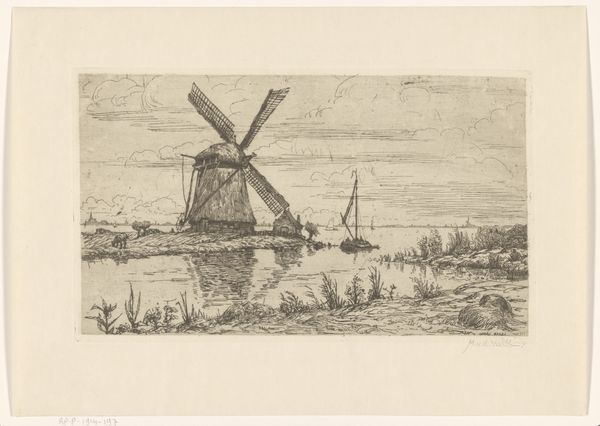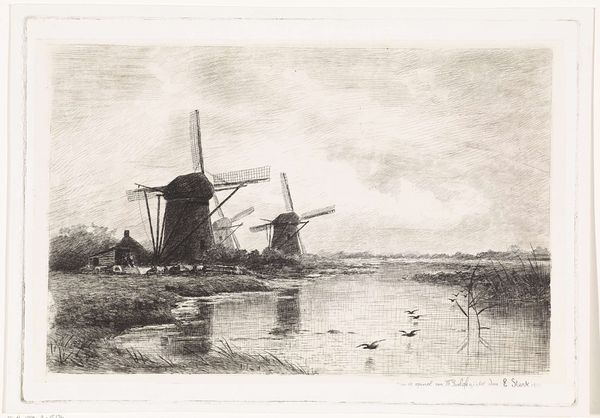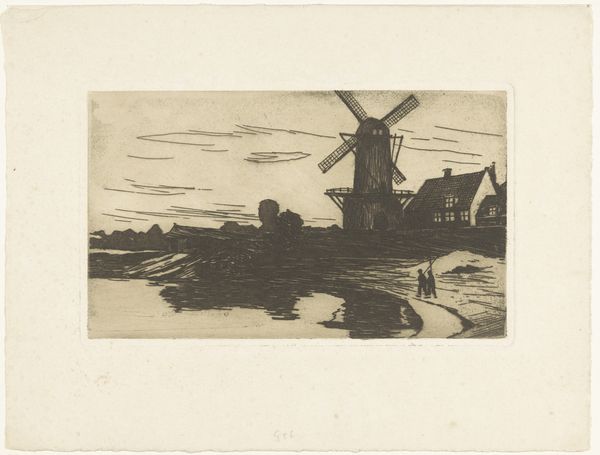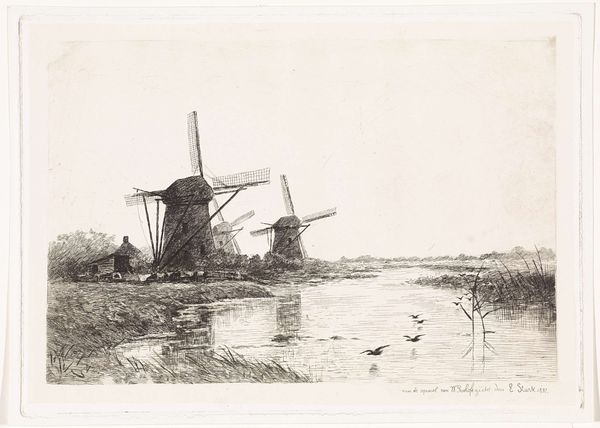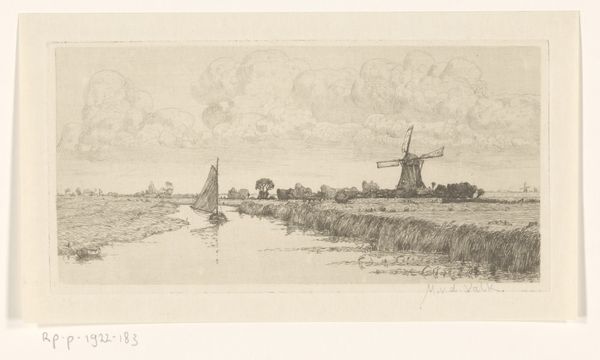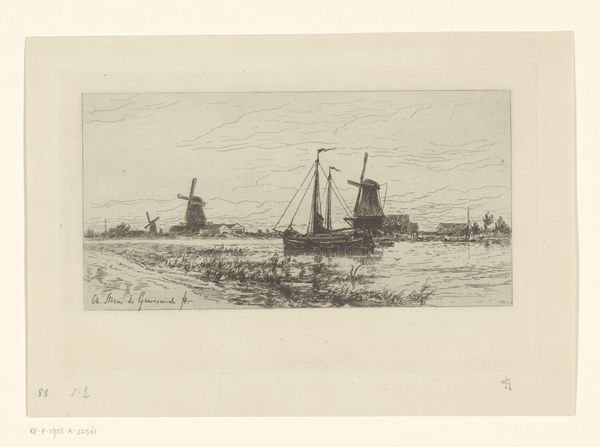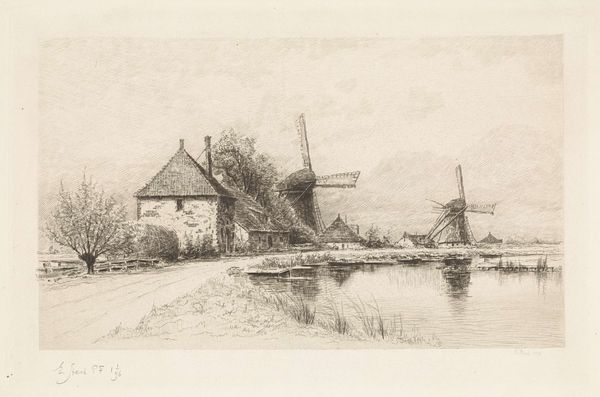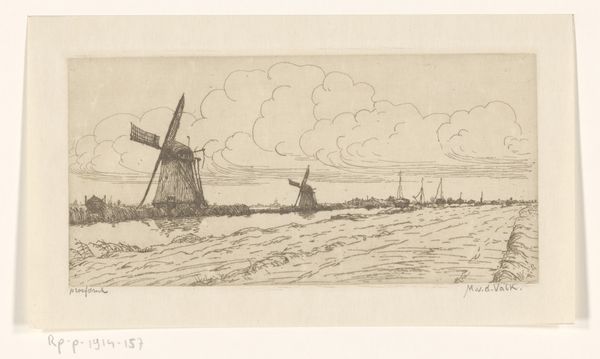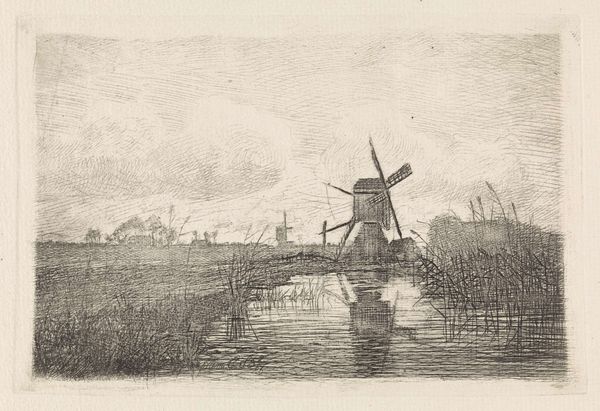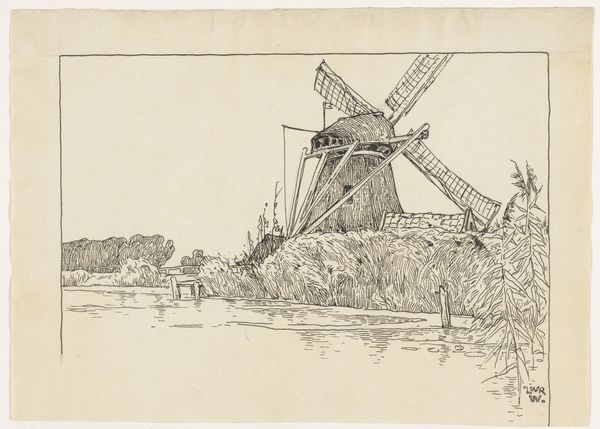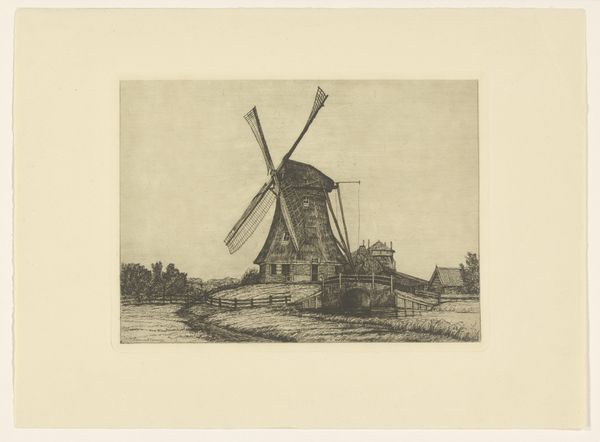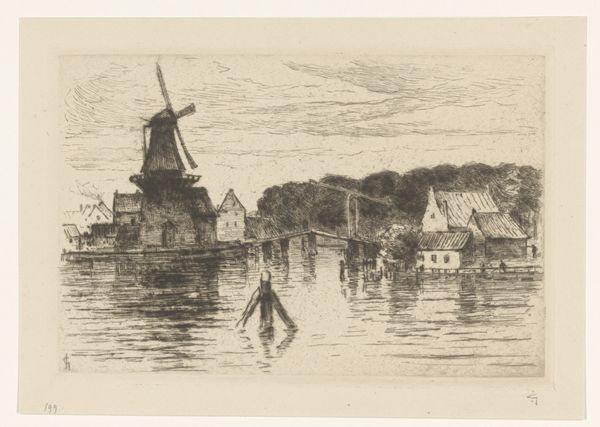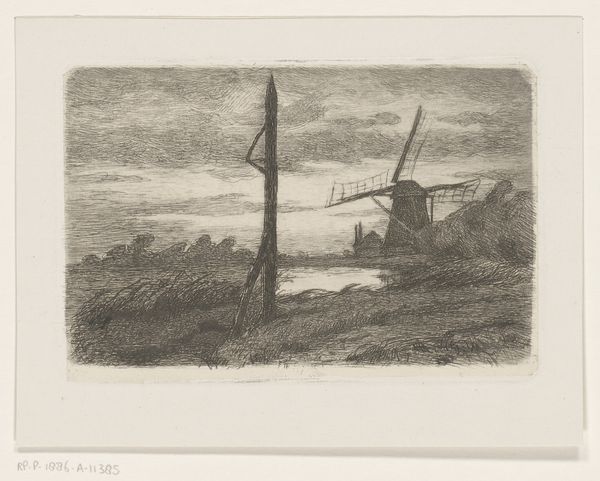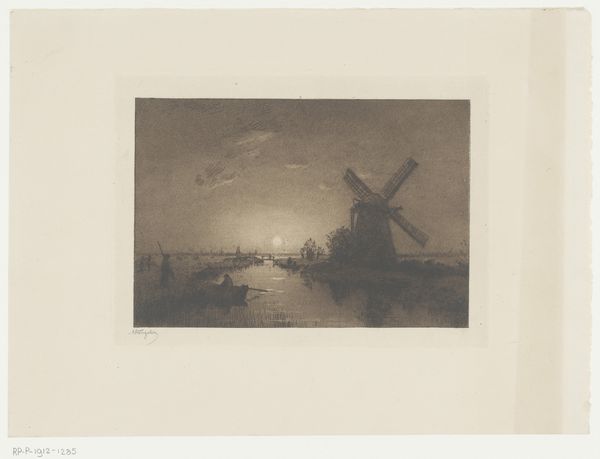
print, etching
# print
#
etching
#
landscape
#
etching
#
realism
Dimensions: height 237 mm, width 298 mm
Copyright: Rijks Museum: Open Domain
Editor: This is "Drie molens in een waterlandschap," or "Three Windmills in a Waterscape," an 1890 etching by Henri Wouters, housed here at the Rijksmuseum. I'm struck by how the artist uses the etching technique to create a misty, almost melancholic atmosphere. What specific elements of its visual structure stand out to you? Curator: The atmospheric perspective is certainly achieved through a careful manipulation of line. Observe how Wouters varies the density and direction of his lines to model form and create depth. Note the dense, closely-hatched lines that define the windmills in the foreground, lending them a tactile solidity. As our gaze recedes into the background, these lines become thinner and more dispersed, resulting in a sense of aerial perspective. Do you perceive a deliberate geometric arrangement? Editor: I do see that now, the way the windmills are positioned diagonally, drawing the eye through the composition. Curator: Precisely. The dynamism isn't just atmospheric, it's also compositional. Consider, too, how the horizontal plane of the water reflects and distorts the verticality of the windmills, creating a mirroring effect which collapses depth. The water's surface becomes a plane onto which the real and the illusory collide. What philosophical concept might this suggest? Editor: Maybe a mirroring of reality, or questioning perception versus reality? That is, maybe it is a kind of visual structuralism where one examines the underlying structure and systems of relationships? Curator: Precisely, an illustration of a structural system of inverted relations! Did you observe the direction and density of the lines indicating the clouds and foliage on the bank in relation to that reflected on the water? This is key to appreciate its intricate structure. Editor: I see now. By focusing on those core structures—line, form, and their interrelationships—you uncover such rich ideas embedded in what seemed like a simple landscape. Thanks for making me focus on that. Curator: Indeed. Through careful consideration of formal elements and underlying philosophical inquiries, the language of the artwork unveils profound ideas that enrich our understanding of visual composition.
Comments
No comments
Be the first to comment and join the conversation on the ultimate creative platform.
